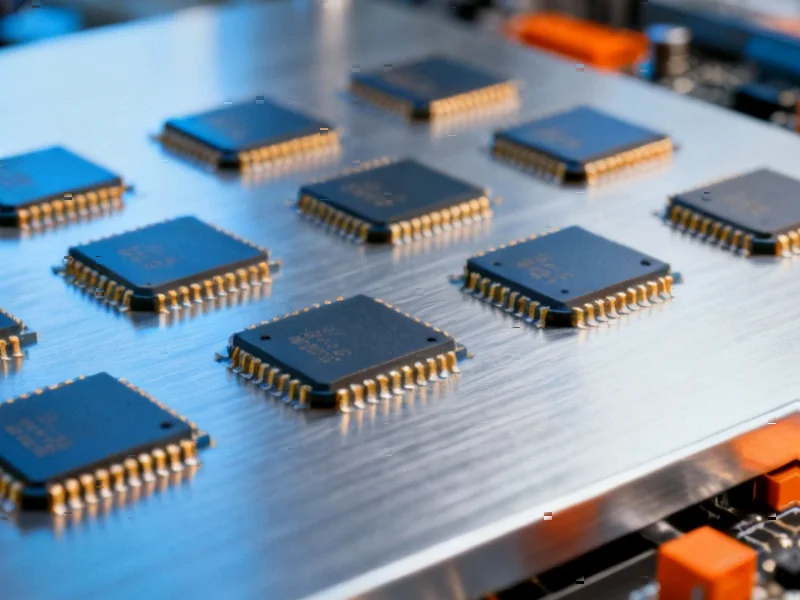According to CRN, AMD has sold the manufacturing unit of ZT Systems to Sanmina for $3 billion while making the electronics services giant a manufacturing partner for its cloud rack and cluster-scale AI solutions. The deal follows AMD’s $4.9 billion acquisition of ZT Systems earlier this year and allows AMD to retain the company’s rack-scale AI solutions design and customer enablement teams. This strategic move represents a significant shift in AMD’s approach to competing in the high-stakes AI infrastructure market.
Table of Contents
Understanding AMD’s Manufacturing Strategy
This transaction reflects AMD’s evolving strategy in the AI infrastructure space, where the company is focusing on its core competencies while leveraging external partnerships for manufacturing scale. Unlike traditional semiconductor companies that historically maintained vertical integration, AMD appears to be adopting a more modular approach where it controls the high-value design and system architecture while outsourcing manufacturing to specialized partners. This model allows for faster scaling and reduces capital expenditure requirements, which is crucial when competing against well-established players in the cloud computing infrastructure market.
Critical Analysis of the Partnership Model
While this partnership with Sanmina Corporation offers manufacturing scale and expertise, it introduces several strategic risks that weren’t addressed in the announcement. First, outsourcing manufacturing creates dependency on a third party for quality control and delivery timelines – critical factors when serving enterprise AI customers with demanding deployment schedules. Second, the separation of design and manufacturing teams could create coordination challenges, especially for complex rack-scale systems that require tight integration between hardware components and thermal management. Third, AMD now faces the challenge of protecting its intellectual property across multiple organizations while maintaining the rapid iteration cycles needed to compete with Nvidia’s integrated approach.
Industry Impact and Competitive Dynamics
This move signals a broader industry trend where semiconductor companies are re-evaluating their manufacturing strategies in the face of massive AI infrastructure demands. The deal positions Sanmina as a key player in the AI hardware ecosystem, potentially giving them leverage with multiple chip designers seeking manufacturing capacity. For AMD, the partnership provides immediate access to Sanmina’s global manufacturing footprint across 21 countries, which could be crucial for meeting the geographic deployment requirements of large cloud providers. However, this approach contrasts sharply with Nvidia’s more integrated model, where the company maintains tighter control over both design and manufacturing through partners, potentially giving them advantages in optimization and time-to-market.
Market Outlook and Strategic Implications
The success of this manufacturing partnership will be critical to AMD’s ability to capitalize on its landmark OpenAI deal and other potential large-scale AI infrastructure contracts. If executed effectively, the model could allow AMD to scale more rapidly than if it had maintained full vertical integration, potentially capturing market share from Nvidia through more flexible and cost-effective solutions. However, the electronics manufacturing services model has historically faced challenges with margin compression and intense competition. AMD’s ability to maintain differentiation while relying on contract manufacturing will be tested as AI infrastructure becomes more commoditized over time. The contingent payment structure of up to $450 million suggests performance-based incentives, but the real test will be whether this distributed manufacturing approach can deliver the reliability and scalability that hyperscale AI customers demand.



